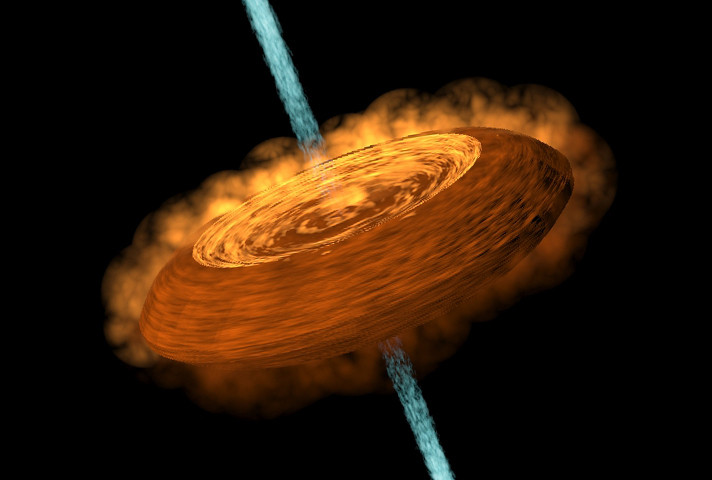First incredible image of dusty 'space hamburger' captured spinning around young star
Accretion disks that form around young star as nickname 'dusty space hamburger'.
A clear image of a young star surrounded by an accretion disk has been captured by scientists for the first time.
These disks made of gas and dust had been hypothesised to form around young stars (or 'protostars'), feeding them and helping them grow bigger.
However, until now, researchers had not been able to observe these small structures as they didn't have the appropriate technology.
This changed four years ago, when a new radio telescope came online – the ALMA radio telescope in Chile. It provided scientists with a new, potent tool to look at very young protostellar systems with unprecedented resolution.
Now, a team of researchers from the US and Taiwan has been able to use the ALMA telescope to zoom in on a young star called IRAS 05413-0104 which they believe to be just 40,000 years old.
For the first time, they identified a rotating accretion disk surrounding it and captured a picture of it.
Accretion disks are thought to be made of silicate, iron and other interstellar material which provide an important source of 'food' for the central young star. These disks are sometimes referred to as 'dusty hamburgers', because of how they look – tripled layered disks with bright outer layers.
Because concrete evidence of the phenomenon was lacking until now, scientists remained puzzled about its properties and exact role in the birth of stars.

Models of star formation were used to study accretion disks. They predicted that these disks would be unable to spin and gather matter due to the strength of the magnetic field from the core of the star.
However, this study, published in the journal Science Advances, indicates that accretion disks are able to form despite the interference of the star's magnetic field.
Scientists new ability to detect these small disks around young stars pave the way for a better understanding of disks around more evolved stars. It could also shed light on the process of planet formation.
© Copyright IBTimes 2025. All rights reserved.





















